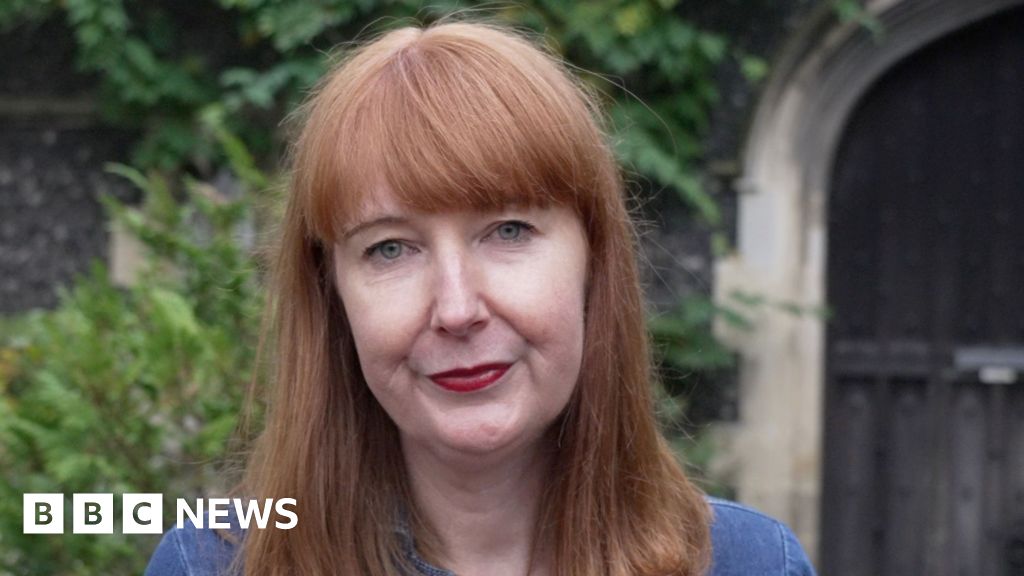- Technology Policy
Federal Reserve Chair Jerome Powell said
时间:2010-12-5 17:23:32 作者:Global 来源:Innovation & Design 查看: 评论:0内容摘要:In the state to the South, immigration status can complicate health care. About 150,000In the state to the South, immigration status can complicate health care. About 150,000
Ayares, a molecular geneticist who heads Revivicor and helped create the world’s first cloned pigs in 2000, says the technique is “like playing two video games at the same time,” holding the egg in place with one hand and manipulating it with the other. The company’s first modified pig, thesingle gene knockout, now is bred instead of cloned. If xenotransplantation eventually works, other pigs with the desired gene combinations would be, too.
Hours later, embryos are carried to the research farm in a handheld incubator and implanted into waiting sows.United Therapeutics’ designated pathogen-free facility in Christiansburg, Va., on May 29, 2024. (AP Photo/Shelby Lum)United Therapeutics’ designated pathogen-free facility in Christiansburg, Va., on May 29, 2024. (AP Photo/Shelby Lum)

On the research farm, Tom Petty’s “Free Fallin’” was serenading a piglet barn, where music acclimates the youngsters to human voices. In air-conditioned pens, the animals grunted excited greetings until it’s obvious their visitors brought no treats. The 3-week-olds darted back to the security of mom. Next door, older siblings laid down for a nap or checked out balls and other toys.“It is luxury for a pig,” Ayares said. “But these are very valuable animals. They’re very smart animals. I’ve watched piglets play with balls together like soccer.”

About 300 pigs of different ages live on this farm, nestled in rolling hills, its exact location undisclosed for security reasons. Tags on their ears identify their genetics.
“There are certain ones I say hi to,” said Suyapa Ball, Revivicor’s head of porcine technology and farm operations, as she rubbed one pig’s back. “You have to give them a good life. They’re giving their lives for us.”And they’re shipping biopsy samples to research partners across the country and as far away as France.
“Our staff doesn’t sleep that much,” said Elaina Weldon, a nurse practitioner who oversees the transplant research. But with each passing week, “everybody is really now at the point of, what more can we do? How far can we push?”Mary Miller-Duffy and her wife, Sue Duffy, leave the NYU Langone Health medical center in New York on Aug. 10, 2023. Research with her brother-in-law’s body has changed Sue’s outlook on organ donation. “Maybe I don’t need all my organs when I go to heaven,” she says. “Before I was a hard no. ... Now I’m a hard yes.” (AP Photo/Shelby Lum)
Mary Miller-Duffy and her wife, Sue Duffy, leave the NYU Langone Health medical center in New York on Aug. 10, 2023. Research with her brother-in-law’s body has changed Sue’s outlook on organ donation. “Maybe I don’t need all my organs when I go to heaven,” she says. “Before I was a hard no. ... Now I’m a hard yes.” (AP Photo/Shelby Lum)She knows firsthand the huge interest: NYU quizzed community groups and religious leaders before embarking on research with donated bodies that might have sounded “a little bit more on the sci-fi side of things.”
- 最近更新
- 2025-07-07 10:30:39The Road Trip of a Lifetime: Step-by-Step Guide to Utah’s National Parks
- 2025-07-07 10:30:39Alcaraz gives point to Shelton on racket fling
- 2025-07-07 10:30:39UK backs Morocco's plan in disputed Western Sahara
- 2025-07-07 10:30:39Golden Retrievers Enjoying 'Ice Bath' to Beat the Heat Has People Melting
- 2025-07-07 10:30:39Video of Aquarium Worker Feeding Baby Manatees Has Everyone Totally Obsessed
- 2025-07-07 10:30:39Trump asks Congress to claw back $9.4 billion in DOGE savings, hits NPR and PBS
- 2025-07-07 10:30:39New Steelers TE Donald Parham Jr. reportedly tears Achilles in OTAs, likely out for season [Video]
- 2025-07-07 10:30:39Police in Missouri college town let All-American Rejects play one final song before shutting down backyard gig
- 热门排行
- 2025-07-07 10:30:39restated March's rate projections
- 2025-07-07 10:30:39Death toll reaches at least 200 in Nigerian town submerged in floods
- 2025-07-07 10:30:39No-Touch Accurate Forehead Digital Thermometer
- 2025-07-07 10:30:39Alcaraz gives point to Shelton on racket fling
- 2025-07-07 10:30:39according to the Senior Citizens League
- 2025-07-07 10:30:39Ser católico en una universidad secular puede ser un desafío; otros lo ven como una bendición
- 2025-07-07 10:30:39cruise ship's scheduled arrival time
- 2025-07-07 10:30:39Plan the Ultimate Father's Day Dinner for Your Favorite Guy
- 友情链接
- Why global imbalances do matter Smash hits: nine Londoners’ favourite public courts Trump signals sanctions relief for China to buy Iran’s oil Are we human or are we spammer? ‘Quality is key’: Delphine Arnault opens a new chapter at LVMH’s Dior US attacks on Iran risk global conflict, Russia and China warn Trump pushes Israel and Iran to preserve ceasefire Trump’s fragile peace in the Middle East Macron and Merz: Europe must arm itself in an unstable world US Congress plots big tax cut for private credit investors Jeff Bezos’s wedding draws storm of protest in Venice The joy of the office packed lunch London’s independent ad agencies will survive the AI apocalypse Is the 12-day Israel-Iran war really over – and who gained what? The war that will remake Iran’s Islamic republic Dnipro church hit by Russian missile mid-service Cuomo vs Mamdani: New York mayoral race showcases Democratic rift Nato chief Rutte praises Trump for making Europe ‘pay in a BIG way’ Nato chief Rutte praises Trump for making Europe ‘pay in a BIG way’ Nato chief Rutte praises Trump for making Europe ‘pay in a BIG way’ The joy of the office packed lunch Trump questions mutual defence as NATO gets set to boost defence spending Lessons from my 30-year war on acne Stablecoins ‘perform poorly’ as money, central banks warn Trump questions mutual defence as NATO gets set to boost defence spending Jeff Bezos’s wedding draws storm of protest in Venice Who is attending the NATO summit and what’s on the agenda? Nato chief Rutte praises Trump for making Europe ‘pay in a BIG way’ Fragile Iran-Israel ceasefire calms oil markets US whistleblower accuses Trump officials of willfully ignoring court orders
